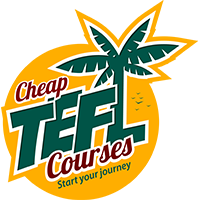
Teaching job? Check. Class schedule? Check. Lesson Plan? Uh oh…
If you find yourself ticking off items in the checklist above and groaning when you get to “lesson plan,” read on and relax. Lesson planning is an important part of being a good teacher, but it doesn’t have to be worrisome.
Today I’m writing about the big picture of lesson planning—the what, why and how.
The Why
Let’s start by looking at why you want to have a lesson plan. First of all, let’s say your colleague falls desperately ill after a poorly judged meal of street food. Your boss, in a panic, asks you to go to fill in for your co-worker as a substitute and class is in fifteen minutes. If your fellow teacher was diligent enough to prepare a legible lesson plan, then you can read that plan and be ready to teach his class in five minutes or less. You might also write a lesson plan for a class you teach, so you don’t forget all the details.
The What
Now for the what . . . What do you need to have in it? Everything someone else needs to be able to go and teach your class and everything you might need to remember if you wrote the lesson more than a few days ago.
A solid lesson plan will include these points:
• board work sketches
• handouts for the students
• what the students will work on in their textbook
• your elicitation questions for the beginning of the class (that alone is worth thinking through and writing down)
• the steps you will go through in your lesson
Also, a lesson plan should include the structures of what you want the students to learn and how you plan for them to learn them.
Even if you are never ill and never asked to substitute for someone, having a lesson plan will help you make sure you include all of the right points in your lesson and don’t skip any important steps or exercises.
Lesson plans can be used no matter your methodology. You could use PPP or ESA or a hybrid of both (or more!), but in your lesson plan you need to be clear on your target language for the day.
The How
How you write up that target would depend, then, on methodology.
Using PPP, you’d make sure you outline the “presentation” part of the lesson. And in ESA, you’d highlight the elicitation for the “engage” portion.
After presenting or engaging, usually, the next step would then be putting some structure (what the grammar or important parts of the lesson look like) to the language point for the day’s class. Show this structure in your lesson plan.
For the practice portion of the lesson, identify very clearly what kind of practice the students will be doing and how you will begin to remove the structures shown in the middle of the lesson so they can learn to work with it on their own.
Include details of the activities you will have the students take part in for each section of the lesson.
Then, for the final bit, you need to show in the lesson plan how the students will practice the language point and use it in a personal way. Show in the plan how you will foster the students’ motivation to learn.
Ask yourself
It’s good to ask yourself these questions while you prepare the plan:
• What language will we present?
• How will we present it?
• How will we practice (PPP) or study (ESA) in the middle part of the lesson?
• And how will we gradually remove the structures?
• What are the details?
Don’t forget to include your wrap-up activity at the end of the lesson plan. It’s nice to have a game or fun activity at the end that serves a dual purpose of reinforcing what was learned in class and enticing smiles from students as they walk out the door.
The real point of the lesson plan is to know what steps you’ll take as you proceed through your lesson. Simple enough? You know it is!
TED’s Tips #1: Lesson plans should be very detailed. Always have the goal that another teacher could look at your lesson plan and use it as effectively as you would if they were teaching the class. That helps you too if you, in the midst of a busy week, forget some of the details of your lesson (happens all the time!).
#1: Lesson plans should be very detailed. Always have the goal that another teacher could look at your lesson plan and use it as effectively as you would if they were teaching the class. That helps you too if you, in the midst of a busy week, forget some of the details of your lesson (happens all the time!).
TED’s Tips #2: Lesson plans are useful no matter which methodology you use. The important thing is to include all the steps you’ll need to teach a good lesson.
#2: Lesson plans are useful no matter which methodology you use. The important thing is to include all the steps you’ll need to teach a good lesson.
The post Lesson Up! How to Plan an Effective Lesson for TEFL appeared first on TEFL Educator.



